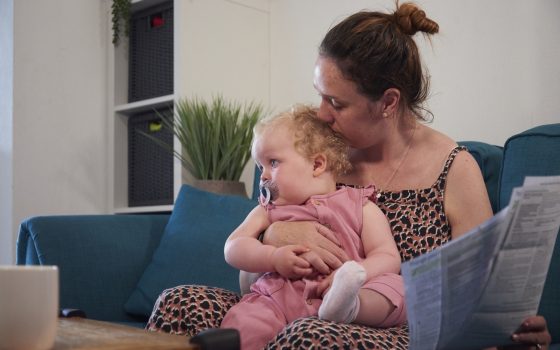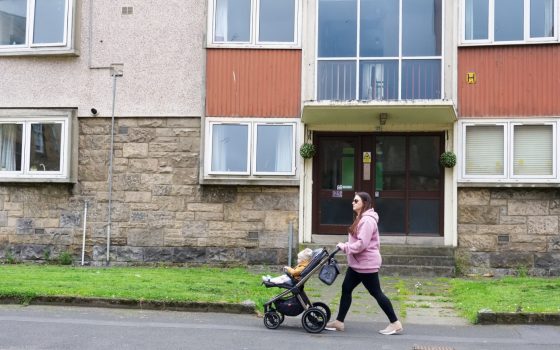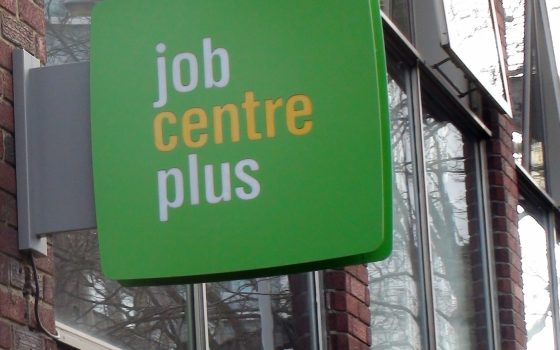Millions facing an income crisis across the country
A third of the UK population is expected to fall into hardship by May
01 March 2021
Things are maybe, possibly, starting to look up. The vaccination programme has gone better than anyone, even the government, expected, and COVID infections seem to be coming down. Last week, the prime minister unveiled a roadmap to start easing lockdown.
But we are by no means out of the woods yet. If the public health crisis abates as we all hope it will, it will lay bare the true extent of the crisis in living standards that is now a reality for vast swathes of the population. New analysis from NEF shows that by May, one in three people — a total of 21.7 million — will be living in families with too little income to meet every day needs. Within this, 12.9 million people (one in five) will be living at an especially high risk of material deprivation. Even if the temporary £20 per week uplift to universal credit is extended for a further six months, as is currently being reported, the figures above will only improve by around 0.7 million and 1 million respectively. And from October, when this latest uplift extension would be due to expire, the picture is set to look even worse than the outlook for this May.
Even with the furlough scheme, unemployment has risen substantially over the last year. The latest labour market data shows that last quarter the unemployment rate was 5.1%, 1.3 percentage points higher than a year earlier. It also shows the largest annual decrease in employment since the aftermath of the financial crisis, with half a million fewer people employed than last year. The redundancy rate has shot up from 8.4 per thousand on the year, to 12.3 per thousand employees.
As a result, millions of people are relying on our social security system to support incomes and help put food on the table. The latest data reveals there were 5.9 million people on universal credit, 3 million receiving housing benefit, 2.5 million receiving personal independence payment, 1.9 million receiving employment support allowance, 1.4 million receiving disability living allowance, and 0.3 million receiving jobseeker’s allowance.
With furlough due to end in April, the outlook is set to worsen for many, despite the success of the vaccination programme and hopes for resuming economic activity. The Bank of England projects unemployment will rise to 7.8% in April-June 2021, and will remain higher than it is currently throughout the next financial year.
Figure 1: Unemployment is forecasted to peak in spring 2021, assuming the furlough scheme ends in April
Three key factors are currently underpinning these pessimistic forecasts and stand to undermine the ability of the economy to rebound. First is the removal of the vital government support — like the job retention scheme and the temporary strengthening of the universal credit and the working tax credit — that has supported incomes and livelihoods throughout the pandemic. The government has indicated it will extend some forms of support further, but details are not yet available, and it is expected the £20 uplift will not be extended for the full year.
Second is the uncertainty over the future pathway of the virus, whether it will mutate, and how people will react to the easing of restrictions. Regardless of whether the government says it is safe to do so, people may not go out and resume economic activity at the levels expected if they do not feel it is safe to do so. And finally, there is significant concern regarding scarring of the economy. Some changes, like increased remote working and online shopping, may become permanent, leaving a permanent mark on the high street and office-based hospitality. As more and more people lose their jobs, this will further reduce spending power in the economy, and limit the extent to which the removal of restrictions will in fact lead to a surge in demand.
Our new analysis reveals the devastating impact the pandemic is having on families across the country. NEF has updated its forecast of people living in households with insufficient income to afford a minimum acceptable standard of living, as measured by the Minimum Income Standard (MIS). As before, we use the latest labour market and economic data, as well as the latest Bank of England forecasts for April-June 2021 and October-December 2021 respectively, in order to track the number of people set to fall below the MIS in the spring and autumn of this year. We also show the number of households living on less than 75% of the MIS, which are four times more likely to experience material deprivation than those above.
The analysis shows that even if the £20 per week uplift to universal credit is extended by six months, there will be an additional 1.1 million people living below the MIS in May compared to our analysis of September 2020, and an additional 1.2 million living below 75% of MIS and at high risk of material deprivation compared to September 2020.
These forecasts, bad as they are, are based on employment forecasts that have actually improved since the last time NEF modelled families below the MIS. But with severe restrictions now set to stay for months to come, it is possible that employment will not recover as fast this spring as some forecasters were anticipating.
Table 1: The number of people living in families with incomes below the MIS is set to rise significantly compared to the last year
The government is reported to plan to extend the £20 uplift for another six months, but with high likelihood it will be withdrawn thereafter. This analysis highlights why this would be a bad idea, and would jeopardise the recovery for the lowest income families. Even if the economy starts to recover and unemployment begins to fall in line with the forecasts, there will still be an increase in the number and proportion of families living below the MIS if the uplift is removed. By November 2021, when the universal credit uplift is likely to come to an end, there will be an additional 1.2 million people living below the MIS compared to September 2020 and 1.8 million people living in households below 75% of the MIS compared to September.
Figure 2: Removing the £20 uplift halfway through the year would increase the number of families living with insufficient incomes, despite unemployment falling
Our analysis also reveals the extent to which hardship is being faced right across the country, with the highest proportions of people living in households below the MIS — and below 75% of the MIS — in London, the North East and the North West. In London, this is due to high living costs, particularly housing, as well as likely high rates of unemployment due to the sectoral distribution of jobs with high numbers of people previously working in retail and hospitality, disproportionately affected by the pandemic. Meanwhile in the North East and North West, incomes are lower than the average of the rest of the country. Furthermore, in the North West there are more families on legacy benefits who do not gain from the £20 uplift. Nevertheless, as Figure 3 shows, all regions will be affected if the uplift is removed before the Autumn.
Figure 3: Removing the £20 uplift halfway through the year would increase the number of families living with insufficient incomes, despite unemployment falling, across all regions
See table 2 in the notes for a detailed breakdown of numbers of people below MIS by region by November 2021.
Our analysis shows that as a bare minimum, the £20 uplift must be maintained for those on universal credit or receiving working tax credit, and extended to those on legacy benefits who do not currently have access to it. And it absolutely must not be taken away later this year, just as we are starting to emerge from the crisis, jeopardising the recovery for families on the lowest incomes across the country.
But such measures represent treading water when it comes to the scale of the income crisis the UK is facing. The New Economics Foundation is calling for a living income: a social security system that raises living standards and provides economic security for all, ensuring no one has to choose between buying the basics or heating their homes. A first step could be to introduce an emergency Minimum Income Guarantee, but the UK’s safety net will need much deeper reform if it is to protect families for the long term — whether that be from future recessions or pandemics, or disruptions in industry due to environmental breakdown.
The £20 uplift and the furlough scheme were a recognition by the government that our current safety net doesn’t cut it. It is time to build one that does, and that is fit for the future.
Notes
Table 2: People in households under the MIS for various quarters for all regions
The analysis looks at people in households living under the minimum income standard (MIS) at three points in time: September 2020, May 2021 and November 2021. We use calculations of the appropriate Minimum Income Standard according to family type, kindly provided by the Centre for Research in Social Policy at the University of Loughborough, although we simplify slightly and group families into 12 types — single, single with one to four children inclusive, couple, couples with one to four children inclusive, single pensioner and couple pensioner. The most up to date MIS calculations available are for 2020, and so we uprate to give 2021 benchmarks using expected inflation (CPI) for April 2021 from the most recent estimates from the Office of Budgetary Responsibility.
We forecast household incomes under current expected government policy, assuming the furlough scheme ends in April 2021, and there are no further SEISS payments from the end of April. We show results with and without the universal credit/working tax credit uplift being extended. We assume the minimum income floor in universal credit is no longer suspended. Household incomes are forecasted for 2021 using the IPPR tax benefit model and FRS data from 2016/17 to 2018/19. To simplify, we assume households with families of more than four children, only have their four youngest children. For September 2020, we use our analysis from November 2020, available here. We update our analysis for 2021 to take into account new Bank of England forecasts for unemployment.
Image: iStock
Campaigns Living income Coronavirus response
Topics Social security






